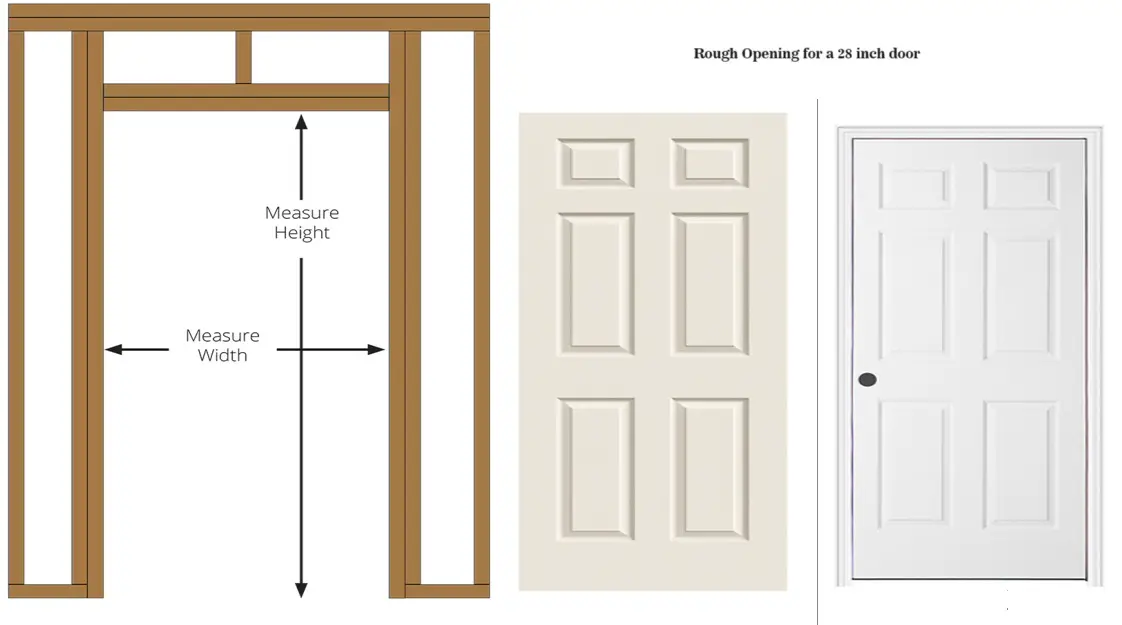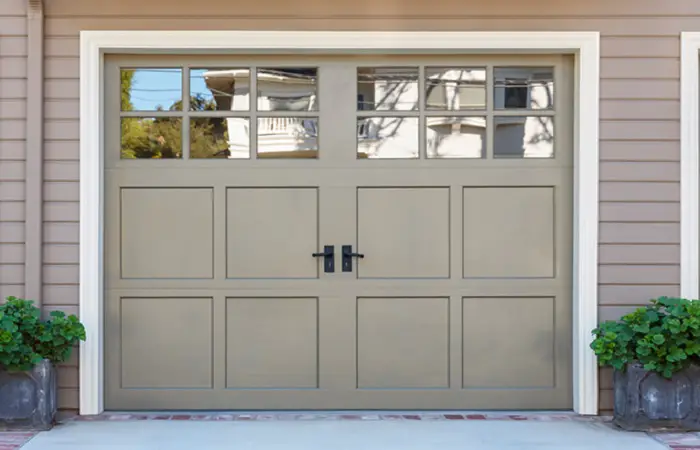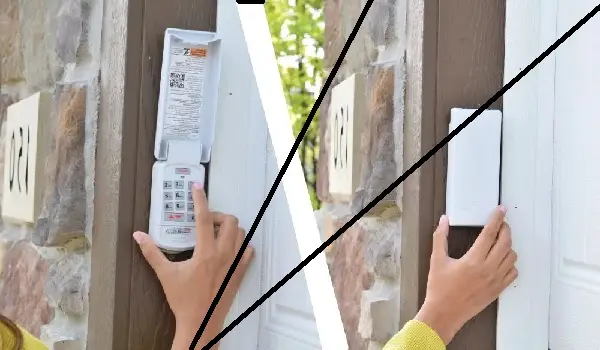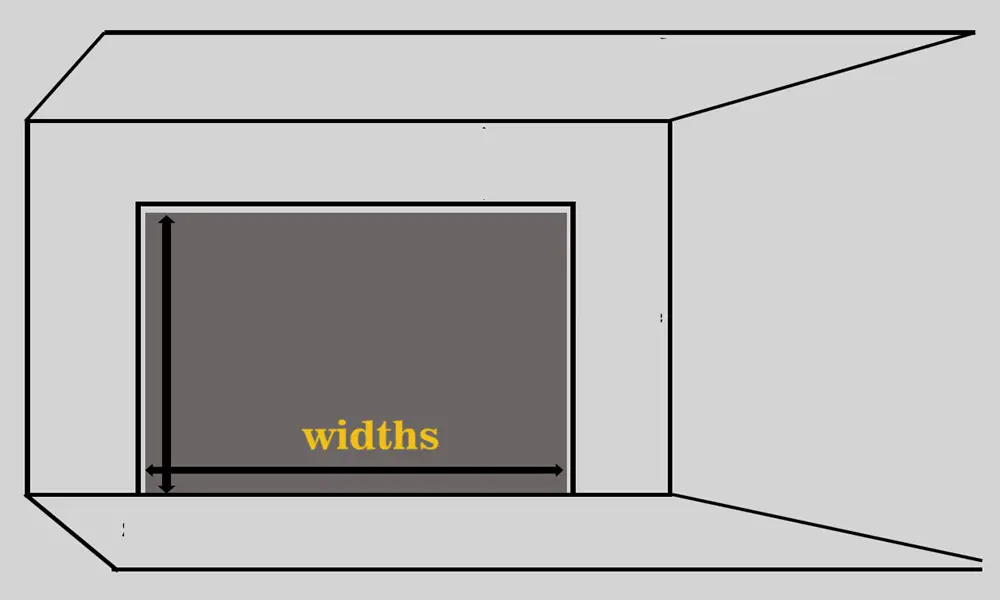Rough Opening for a 28 Inch Door: Getting it Right Every Time
Rough Opening for a 28 Inch Door Doors are more than mere entryways; they are portals to our private spaces. […]

Rough Opening for a 28 Inch Door
Doors are more than mere entryways; they are portals to our private spaces. Whether you’re installing a new door or replacing an old one, getting the rough opening size right is crucial for a seamless fit. In this article, I’ll explain the ins and outs of creating the perfect rough opening for a 28 inch door.
Understanding the Basics

Factors Influencing Rough Opening Size
Before diving into calculations, let’s identify the factors influencing the rough opening size. Various elements, such as door type, wall construction, and local building codes, play a role in determining the dimensions.
The Essential Formula
The basic formula for determining the rough opening size involves adding 2 to 2.5 inches to both the width and height of the door. This simple yet effective formula sets the foundation for a precise fit.
Calculating the Rough Opening
Getting started creates the perfect rough opening for your 28 inch door involves a delicate dance of measurements and precision. Let’s delve into the specifics of width and height calculations, ensuring that your door not only fits snugly but operates with seamless grace.
Width Calculation
The width of your rough opening is a critical factor in allowing your door to swing freely and smoothly. For a 28-inch door, the calculation involves adding 2 to 2.5 inches to the door’s actual width. Here’s how the formula unfolds:
Door Width + 2″ to 2.5″ = Rough Opening Width
For our 28-inch door, the calculation looks like this:
28″ (Door Width) + 2″ to 2.5″ = 30″ to 30.5″
This range, from 30 to 30.5 inches, ensures that your door has enough space to move without encountering any obstructions. It’s the sweet spot that guarantees functionality and a smooth operating experience.
Height Calculation
Equally important is the calculation of the rough opening’s height. With the standard door height typically set at 80 inches, adjustments are made to accommodate potential variations during installation. The formula is as follows:
Door Height + 2″ to 2.5″ = Rough Opening Height
For our 28-inch door, the calculation unfolds like this:
80″ (Standard Door Height) + 2″ to 2.5″ = 82″ to 82.5″
This range provides the necessary leeway for adjustments during installation, ensuring that your door aligns perfectly within the frame. It’s a subtle but crucial factor that contributes to the overall success of your door installation project.
Additional Considerations
Door Type Variations
It’s important to note that pre-hung doors may have slightly different rough opening requirements due to the existing frame. Always refer to the manufacturer’s specifications for precise measurements.
Impact of Wall Construction
The type of wall material, be it brick or stud walls, can influence the rough opening size. Adjustments may be necessary to accommodate shims or other installation requirements.
Navigating Local Building Codes
Local building codes may specify minimum rough opening sizes for doors. To avoid complications, always check and adhere to your local codes before framing the opening.
Helpful Resources
Manufacturer’s Specifications
Consulting the manufacturer’s specifications is a crucial step in ensuring the accuracy of your rough opening. These guidelines provide specific measurements tailored to the door type.
Safety Tips
When in doubt, it’s always better to err on the side of a slightly larger rough opening than a smaller one. This approach allows flexibility for adjustments during installation, ensuring the door fits properly.
Why Size Matters
The Importance of Accuracy
Accurate measurements are paramount to the success of your door installation. A properly sized rough opening sets the stage for a door that not only fits snugly but also functions seamlessly.
Flexibility During Installation
A slightly larger rough opening provides flexibility during the installation process. This allows for minor adjustments and ensures a hassle-free experience.
Ensuring Safety
Key Safety Measures
Prioritize safety by following key measures during the installation process. This includes using appropriate tools, wearing protective gear, and seeking professional advice when needed.
Importance of Professional Advice
While many DIY enthusiasts tackle door installations successfully, complex situations may arise. Don’t hesitate to seek professional advice to ensure safety and precision.
DIY Pitfalls
Common Mistakes to Avoid
Avoid common DIY pitfalls by understanding the challenges associated with door installations. From inaccurate measurements to poor frame quality, awareness is the key to success.
How to Overcome Challenges
Equip yourself with the knowledge to overcome challenges. Learn from others’ mistakes, and follow best practices for a smooth and trouble-free installation.
Real-Life Examples
Success Stories
Explore success stories of individuals who mastered the art of door installations. These real-life examples provide inspiration and valuable insights.
Learning from Mistakes
Mistakes happen, even to the most seasoned DIYers. Learn from common mistakes and understand how to rectify them for a flawless installation.
Quality Materials
Door Selection
Choosing the right door is as important as getting the measurements right. Consider the material, style, and functionality to enhance the overall aesthetics of your space.
Importance of Durable Frames
A durable frame is the backbone of any door installation. Invest in quality materials to ensure longevity and structural integrity.
Step-by-Step Installation
Preparing the Opening
Prepare the rough opening by meticulously following the calculated dimensions. This step lays the foundation for a smooth installation process.
Placing the Door
With the opening ready, carefully place the door into position. Pay attention to alignment and ensure all components function as intended.
Professional vs. DIY
When to Call an Expert
While DIY is rewarding, some situations may require professional expertise. Know when to call an expert to avoid complications and ensure a flawless installation.
Benefits of Professional Installation
Professional installations come with added benefits, including efficiency, precision, and the assurance that the job is done right the first time.
Adaptability in Design
Customization Options
Doors are not one-size-fits-all. Explore customization options to match the door to your aesthetic, creating a personalized and visually appealing entryway.
Matching the Door to Your Aesthetic
A well-chosen door enhances the overall design of your space. Consider style, color, and design elements to ensure a seamless integration with your home’s aesthetic.
Future-Proofing Your Opening
Anticipating Changes
Anticipate future changes by choosing modular solutions. This ensures adaptability, allowing you to easily replace or upgrade your door as needed.
Modular Solutions
Investing in modular solutions provides a future-proofed opening, accommodating changes in door design and technology.
You may also like:
Conclusion
In conclusion, achieving the perfect rough opening for a 28 inch door involves a combination of precision, understanding, and adherence to safety guidelines. By following the outlined steps and considering various factors, you can ensure a successful and aesthetically pleasing door installation.
FAQs
Can I use the same rough opening for different door types?
While the basic formula applies to most doors, it’s crucial to check the manufacturer’s specifications for variations in rough opening requirements.
What tools do I need for a door installation?
Essential tools include a measuring tape, level, saw, and drill. Refer to specific door installation guides for a comprehensive list.
Are there standard sizes for rough openings?
Standard sizes exist, but variations may occur based on door type, construction material, and local building codes. Always check for specific requirements.
How do I ensure the door is aligned correctly during installation?
Use a level to ensure proper alignment. Make adjustments as needed before securing the door in place.
Can I install a door without professional help?
Many individuals successfully install doors as a DIY project. However, complex situations may require professional assistance for optimal results.











